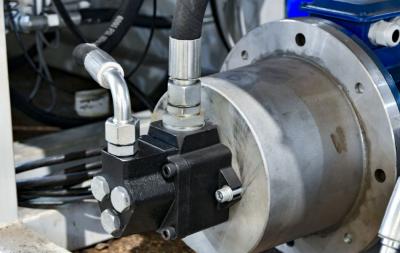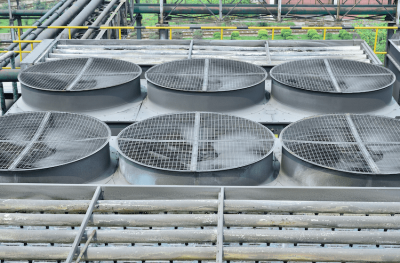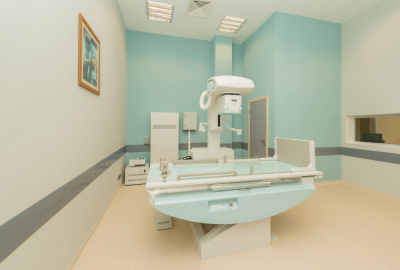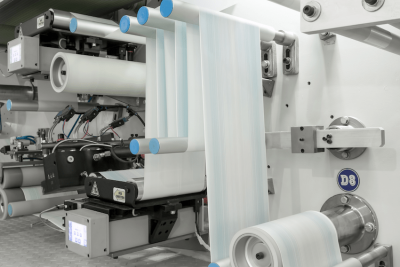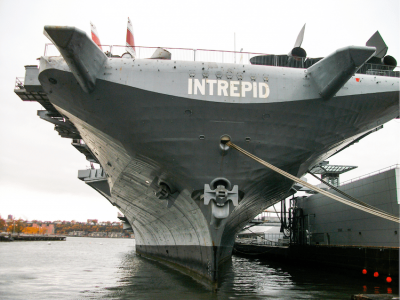We use cookies to provide you with an improved user experience and to personalize content. To learn more, see our Privacy Policy.
Free UPS ground shipping on all orders of $150 or more. Shop Now
Newsfeed
Quality Management in Industrial Instrumentation
In industrial manufacturing and engineering circles, we hear the word 'quality' more often than we can count. There seems to be a universal interest in achieving high quality, but what exactly does 'quality' mean, and is it measuring the same metrics in every application? More specifically, what does the mention of 'quality management' mean for those of us in the industrial instrumentation world?
Application Case Study: Pressure Protection in Vehicle Hydraulic Testing
Most readers will have a mental concept of surface mining, with big excavators and dump trucks zipping about a pit dug into the Earth in search of valuable materials such as copper, gold, and diamonds. We thought we had a good understanding of what open-pit mining entailed as well, until we learned just how big the equipment used in these operations really is. Not long back, we received an inquiry from a returning client looking to address an automation challenge with their hydraulic test rigs – rigs that exclusively tested mining equipment hydraulics used in large open-pit mines. As the client described their test rigs and the mining vehicles they served, we realized that our mental image of mining equipment was way too small. Luckily, even such large equipment and the test rigs that keep them in tip-top operation still use normal sized instrumentation. With that, we turned our attention to the client’s concerns about protecting their test rigs from significant, hazardous high pressure situations, and dug right in.
Application Case Study: Pressure Control in Adiabatic Cooling
A prospective client requested Whitman's review of a new application they were working on involving industrial adiabatic cooling technology, seeking an analysis and recommendation on control sensor solutions that could fit into a new product lineup they were developing. "Sure, we'll help," we said, "that sounds pretty cool." Pun completely intended!
Application Case Study: Pressure Protection in CO2 Lasers
Tuesday mornings are arguably the best possible time of the week to be reminded of high school science terms we haven't thought about for too many decades. Or at least for one Tuesday morning in particular, in which we received an email asking about our experience in gas control for interferometry propagation. We'll save you a Wikipedia search - lasers; they were referring to lasers. This email was from a leading CO2 fabrication laser manufacturer looking for assistance in solving a gas mixture delivery challenge for an upcoming continuous laser marking application
Using E-Procurement for Instrumentation Contracts
Most of us have heard about e-commerce for over twenty years, with online retail shopping being a matter of course today. During this same period, commercial and industrial suppliers have quietly evolved their own online procurement ecosystem, with modern footprints that often rival consumer platforms in revenue if not volume.
Functional Safety Controls - Protecting Your Employees and Processes
It's not always so obvious how many (or how few) degrees of protection stand between a normal operation and a significant emergency, especially for more mundane systems that don't fail in spectacular ways. With this thought in mind, we're too-often shocked when we hear about incidents where virtually no safety measures were in place, which motivates us to write this article sharing ideas about how engineers can conceptualize safety decisions using a unique layered approach.
Forging Rewarding Relationships in Industrial Instrumentation Supply
When you look across your pool of industrial component suppliers, how do you gauge their value to your organization? Do you measure suppliers primarily by their pricing, their delivery speed, or perhaps their responsiveness?
Application Case Study: Pressure Control in Medical X-Ray Systems
Medical radiography equipment is highly prone to heat-induced outages and failures, so much so that most high-volume machines today come equipped with onboard active cooling systems. In a recent project, Whitman Controls was engaged by a client seeking automation support for their own line of x-ray tube cooling systems. Thinking about how much time could be saved in radiology waiting rooms everywhere if x-ray machines never overheated, we couldn't help but scrub in!
Avoiding Process Upsets in Pulp & Paper Manufacturing
For those of us who enjoy reading a good hardcopy book, part of the experience is feeling the physical paper in our hands. We know what "good" book pages feel like - thicker than thin, crisp, with a slightly rough texture that grabs our fingers, and dense enough that it feels like each page deserves to carry the weight of the words printed on it. For us to enjoy this experience as much as we do, a great many things must happen correctly across the paper manufacturing process.
Ultra-Reliable Sensor Technology for the Maritime Shipping Industry
As the poetic analogy goes, if humans live one breath at a time, international trade lives one cargo ship at a time. Each year, an estimated 11 billion tons of goods make their way over open ocean, dutifully transported by over 100,000 active seafaring freight vessels between ports across the world.


